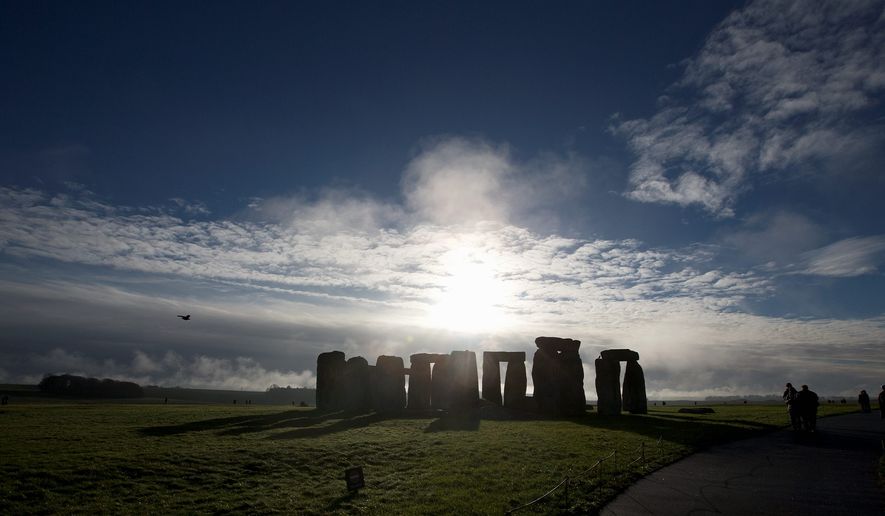Stonehenge, that mysterious, brooding circle of ancient megaliths, still has the capacity to surprise.
A group led by archaeologists from Britain’s University of Bradford announced Monday they have discovered about a 1.2-mile wide circle of ancient shafts nearby that they say are most likely from the same Neolithic time period when Stonehenge was erected, and may have marked a boundary to an even larger complex.
The structures near the Neolithic village of Durrington Walls are barely over a mile from the famous Stonehenge site on the Salisbury Plain in south-central England and have been geologically dated to around 2500 BC, the university said in a statement.
“The area around Stonehenge is amongst the most studied archaeological landscapes on earth and it is remarkable that the application of new technology can still lead to the discovery of such a massive prehistoric structure which, currently, is significantly larger than any comparative prehistoric monument that we know of in Britain, at least,” Bradford archaeologist Vince Gaffney said.
Researchers have found up to 20 shafts but think there may have been more than 30 in the original structure. The shafts are just over 16 feet wide and nearly 33 feat long.
Mr. Gaffney said the size of the shafts — and the circuit they define in the area — are “without precedent within the UK.”
“It demonstrates the significance of Durrington Walls Henge, the complexity of the monumental structures within the Stonehenge landscape, and the capacity and desire of Neolithic communities to record their cosmological belief systems in ways, and at a scale, that we had never previously anticipated,” he said.
Archaeologists speculate that the features and internal post line may have directed people to religious sites, while warning others not to cross the boundary.
Dr. Nick Snashall, National Trust archaeologist for the Stonehenge and Avebury World Heritage Site, said the builders of Stonehenge could very well have “eaten and feasted” at the newly discovered site as they rested from their work, offering new clues to the overall spiritual landscape of the time..
“This astonishing discovery offers us new insights into the lives and beliefs of our Neolithic ancestors,” he said.
The research at Durrington was done by a group of archaeologists led by the University of Bradford in collaboration with the Stonehenge Hidden Landscape Project and with the Ludwig Boltzmann Institute for Archaeological Prospection and Virtual Archaeology and a number of British and Scottish universities.
“After centuries of study of the Stonehenge landscape, the discovery of such an incredible new monument is testament to the value of interdisciplinary research,” said Prof Henry Chapman of University of Birmingham. “Our understanding of this outstanding place has been transformed in recent years, and the identification of such a significant and extensive new site highlights that there is always something more to discover.”
Bradford University researchers said some of holes where the shafts are located had been known for a long while, but that remote sensing, sampling and other modern analytical tools, a pattern began to emerge. Britain is dotted with stone circles build thousands of years ago for reasons that remain mysterious.
One mixed blessing for the researchers trying to understand what they have found: The discovery comes at a time when tourism to the famous Stonehenge site has plummeted because of travel and health restrictions related to the coronavirus pandemic.
• This article was based in part on wire service reports.




Please read our comment policy before commenting.